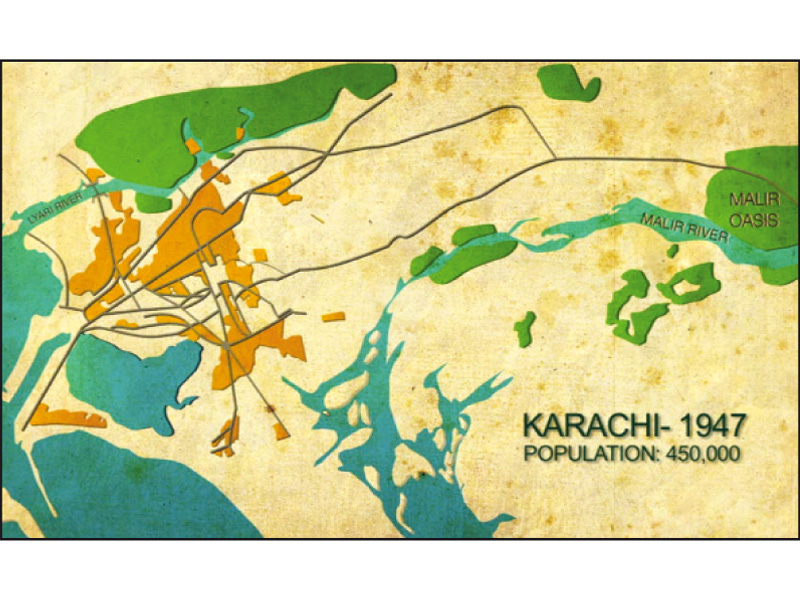
Are we some kind of garbage that you want to dump us on the outskirts, asks the woman from Lyari. “Why don’t you give us places to live in Defence, Gulshan-e-Iqbal, Gulshan-e-Maymar?”
She’s got a point, and many people like her agree: why should they move out to the peripheries of Karachi just because it’s getting too congested in the centre of the city? “Karachi cannot expand any more,” adds urban expert Arif Hasan. It has to go up.
He and the woman from Lyari are talking about one thing: densification. They were commenting on it in a documentary, Karachi Rising, which was screened on Friday at NED University for the launch of a new IIED report on land ownership.

People want to live in the city and not in the suburbs. “Families want to live closer to work,” says Hasan, explaining factors driving densification. Poor people with informal jobs (such as cooks and cleaners) tend to live close to where they work in katchi abadis. And generally, those with office jobs have to travel long distances to get to work.
It is not surprising that people also want to stay close to their communities, neighbourhoods where they grew up. As a young man put it, if he is in his neighbourhood where he grew up, 400 people would come to his funeral. But if he moved to say Taiser Town, only 10 would come.
This is also cheaper. A study found that 2,000 women from three urbanized villages on the outskirts, for example, travel up to four hours a day just to reach the south zone of Karachi where their work is located. They spend Rs90 a day on transport.
 The illustrations show how densification develops. SOURCE: KARACHI RISING
The illustrations show how densification develops. SOURCE: KARACHI RISINGIt thus makes much more sense for people to invest in motorcycles. A young man who lives in Surjani explained that it takes him 30 minutes to travel back and forth on his motorcycle - a journey that takes two hours by bus. So far in 2013, Karachi has 1.4 million motorcycles. It doesn’t help that there is no mass transit. Women won’t use motorcycles because they are dangerous and not culturally acceptable.

“Over the past several decades, new satellite towns were developed in the anticipation that they would be linked to the city centre and new industrial zones,” says Prof. Noman Ahmed of NED. But the poor don’t want to live here because there isn’t a proper transport network, for one. The government has to help them pay for housing in the dense areas and bring the katchi abadies into its net so that proper homes are built.
Given these preferences (proximity, cost, less suffering), Karachi is growing more dense: 17,325 people per square kilometre. The private sector has stepped in to cater to this demand. But much of this development is informal (read katchi abadi).
People are thus building one-unit houses in these unplanned settlements in the congested parts of the city. They prefer this, because they can expand or build up as their families grow. They can use parts of the house for commercial purposes as well.

But these structures don’t follow the building control authority rules. The high-rises are built on shallow foundations and in an earthquake they will collapse, warns Hasan. They don’t have proper ventilation and aren’t built to properly allow light in. Plus these housing units are becoming smaller and smaller in the dense parts of Karachi so they are more affordable. This leads to immense congestion, which Hasan warned will naturally have its own social problems.

But more than anything else, these dense high-rises in katchi abadies don’t have lifts. The elderly and children find it hard to make it up and down which means that they are cooped up all day.
At the end of the day, the question is whether the elected representatives and bureaucrats feel that poor deserve help to get a roof over their heads. Pro-poor or social housing is the answer to many of Karachi’s problems. But unless something is done soon, it will all be downhill from here.
Published in The Express Tribune, September 15th, 2013.
COMMENTS (10)
Comments are moderated and generally will be posted if they are on-topic and not abusive.
For more information, please see our Comments FAQ

1723278472-0/BeFunky-collage-(4)1723278472-0-165x106.webp)


1719564405-0/BeFunky-collage-(19)1719564405-0-165x106.webp)
1732525382-0/Express-Tribune-(10)1732525382-0-270x192.webp)


1732523977-0/Copy-of-Untitled-(82)1732523977-0-270x192.webp)
1732520846-0/Copy-of-Untitled-(79)1732520846-0-270x192.webp)
1732515558-0/Copy-of-Untitled-(76)1732515558-0-270x192.webp)






The only practical way of preventing the unchecked population growth that's the main reason behind most of Karachi's problems is to break up the city into four or five autonomous self-governing units on administrative lines with locally elected leaders. MQM tried to get this idea off the ground under Mustafa Kamal and we've all seen how much of an impact it made in such a short period of time.
Govt should employ the unemployed to work and put them to building free houses for themselves.
Bring Mustafa Kamal Back
It has only been the matter of intention that has always been bad for Karachi no matter who has been the Political master of Karachi.
Malir and Lyari are in khi last I checked
Karachi needs a reprieve from population influx...there are no more unskilled jobs available...we see people belonging to seraiki area coming to karachi in the search of work but they all end up taking beggary as a profession. I think special emphasis should be laid upon developing cities like Multan, Gujranwala. Peshawar and Bahawalpur in order reduce pressure on Karachi.
What is the source of the numbers of land per sq ft and daily wage rate? Also if the numbers represent areas in Liyari, Malir etc then the graph is misleading since the article is about Karachi.
if you look at it in nominal rs terms, gdp per capita of karachi has increased by atleast 10 times (from rs 125 per person to rs 1348 per person since 1991). Bear in mind that this is per capita income therefore income per family would be a multiple of this number
What Karachi administration, and other mega cities need to do is that build low income housing schemes. Appartment blocks 2 or 3 bedrooms. And yes in the middle of the city, and maybe some on outskirts as well.
Free housing will have to be given to those to empty various occupied areas. But look at the ong term advantages..
1/ Wil be able to collect tax. 2/ Will be ble to collect utilities 3/ better law and order control 4/ better standard of living for people, thus improving there outlook as well 5/ proper land utilization 6/ in increase in land area...but please make these into parks.
the city infrastructure is worst even lahore or isloo is better, per capita income lowest among all big cities of same size around world, no governance, no education institures, no transport, no electricity, most of the companies have closed offices, hotels are selling properties and moving out, people are brainwashed openly, violence everywhere, underworld capital of south and central asia, . its time to declare the city dying...